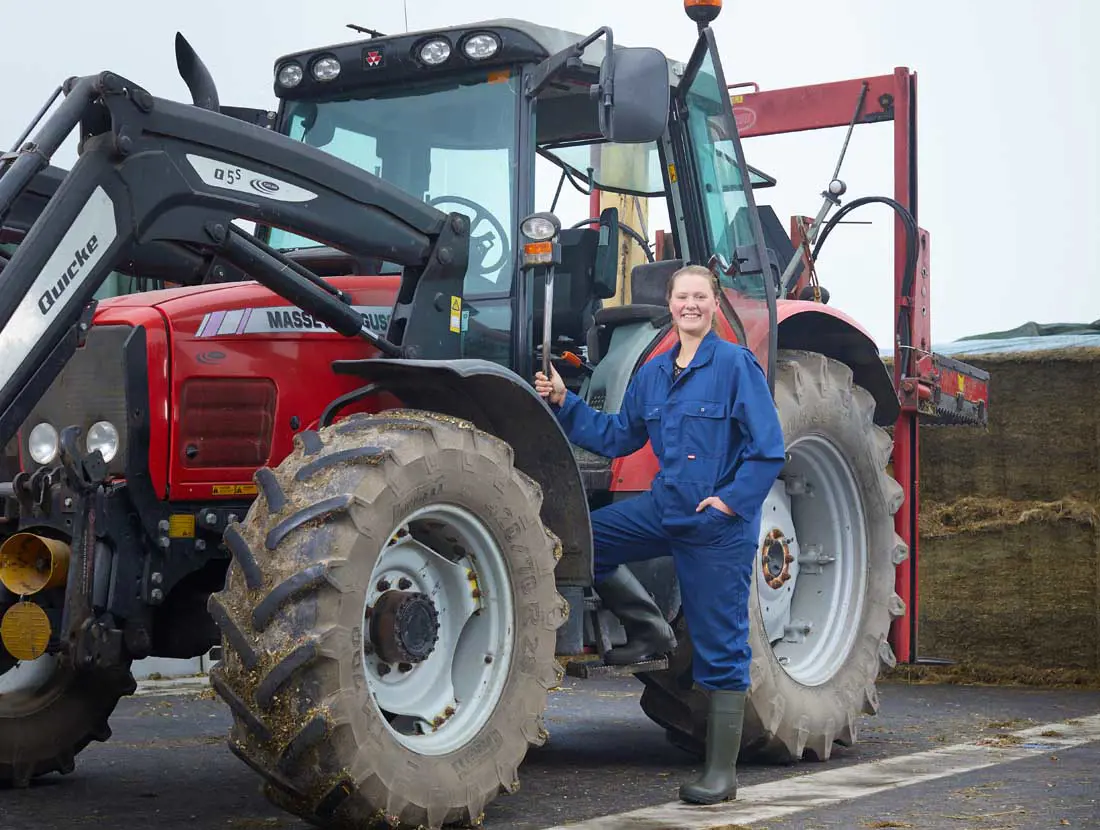Verleun family optimises total business operations step by step
At the end of the 1990s, the Verleun family moved from Boskoop in the province of South Holland to Briltil near Groningen (NL). They already had children and this move made it possible to make the business futureproof. In Boskoop, they had 35 cows, but in Briltil, Frans (57) and Evadien (56) started with 70 cows. The business has since grown and there are 145 snouts in the feed trough. Daughter Leonie (25) has also joined the partnership. In recent years, they have addressed parts of the business operations step by step.

‘Together we discuss what we feel would be good to do,’ Frank kicks off. ‘Obviously everyone has their own role in the business, but we decide everything together at the kitchen table,’ Evadien adds. ‘I do whatever I'm called to do, I always say, and Leonie and Frans do everything behind the scenes.’
Cow health
‘What we've really addressed in the past few years is cow health,’ says Leonie. ‘I'm interested in breeding, and together we explore how we can get cows which are not only productive, but also have few problems. So, we cross our black and red Holstein cows with Brown Swiss and Montbéliarde. That gives a good balance between muscles, health and levels.’
Role of gross return minus feed costs
It's obviously not just breeding that determines whether you have problems with the cows or not. Frans: ‘Since we've been using De Heus feed, I've noticed an improvement in cattle health. The main change in the rations is that we look at the economic parameter, maximising the gross return minus feed costs and looking less at feed costs alone. Because if you produce more, health and fertility must also be better. Which is why we also give OmniGen. During and after this summer's heatwave, I noticed that fertility remained stable.’
‘We don't change too much at the same time, because at least then you know the effect. A good way is to change something at the beginning of the year. Then you can see the impact compared with the previous year. Otherwise, you choose too many things and ultimately you learn nothing at all.’
Silage
Over the past year, the trench silos were renewed. Silage analyses show a higher digestibility coefficient and a better situation than average in the Netherlands. Leonie: ‘Our specialist at De Heus (Jeep Alders, ed.) kept telling us that we needed to work on preventing heat generation. This is easy in the new trench silos and works well. In the past the feeding-out speed of the silage was according to the standards. The main problem was a proper compaction during the silage making and its negative effect afterwards. Now the density is much better, the silage stays colder, it tastes better and is easier to use.’
Issue
‘Another issue we struggled with,’ says Frans, ‘was the urea content. That was a bit too high. To address this, in the grazing season, we started using RECYCLE in our feed. That had a real effect - we dropped from 26 to 21. By taking a positively critical approach from both sides, we get a bit further, step by step.’
The feed trough must be full
‘It's the same with calf rearing,’ says Evadien. ‘We use the KalfGarant concept by Alpuro and De Heus. One of the things here is that the feed trough must always be full. But that's not the only thing. After being feed colostrum from their own mother for three days, a clean compartment does wonders. If you then notice fewer diarrhoea problems, then that's great. It's really the combination of measures.’
Increase land-related activities
Leonie: ‘In recent years, we've taken steps in many areas, such as cow health, forage management and calf rearing. But there's still lots to improve. We next want to tackle the dry period and together with De Heus, we are going to look more at grassland management, soil and fertilisation. There are opportunities here to further improve our land-related activities. For example, choosing the right type of fertiliser is one of the new challenges for the coming year.’
